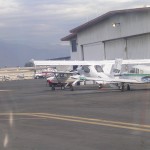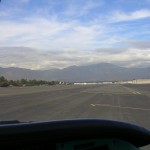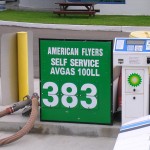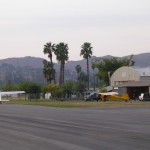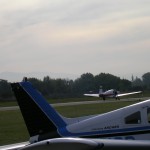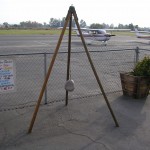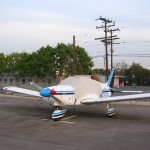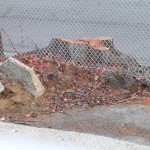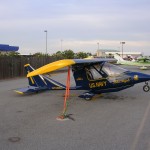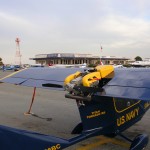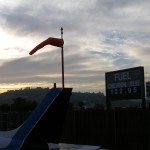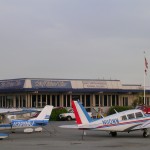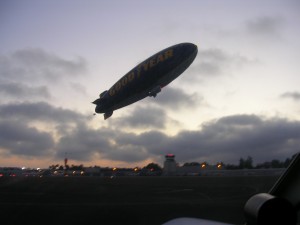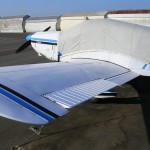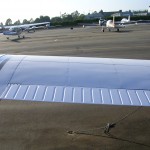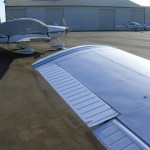I had a meeting last week up in the Bay Area which was a good excuse to get some flying in. I flew 32169 up to San Carlos Airport (SQL), which was close to our meeting site in Palo Alto and slightly larger than the Palo Alto Airport (PAO). The trip is a little more than 270 nautical miles as the crow flies, so it’s a nice 3 hour flight with no wind.
The trip up Monday was pleasant, but hazy. There had been a 1000′ ceiling at San Carlos earlier in the day that seemed to be coming in and out, so I filed IFR. I always think it’s easier to cancel IFR and go back to VFR than the other way.
The trip up had a slight tailwind and was generally a smooth trip. It was really hazy over the central valley, though. I wouldn’t call it IMC, but there wasn’t a great horizion either. And I’m glad I was handed the approach as well, so I could follow it right to the airport. The combination of the haze and the unfamiliar airport made it hard to spot. To be fair, the first time I flew into San Carlos I had similar problems finding the field, so maybe this isn’t a matter of conditions.
Anyway, I had a productive meeting and was planning to head out Thursday night for home. The best and worst things about meetings I attend is that there’s generally network connectivity in the meeting, and in this case I used it to watch the weather out of one eye. What was supposed to be a day with a few rain showers turned much more exciting.
First of all, there was an icing airmet covering the northern half of my route. Ice is very bad in a little plane like mine, but I’d been expecting this from earlier forecasts. Two factors were working in my favor here. First, the freezing level was relatively high, so if I stayed low enough, I’d be below the airmet – and more importantly in air above the freezing point. Secondly, the clouds weren’t solid. There were layers to sit between. For those of you who don’t worry about ice forming on airplanes, significant icing is essentially impossible outside clouds or precipitation. So I had a couple plans for icing. The thunderstorms were a special surprise, though.
A convective sigmet popped up between the Bay Area and the LA Basin about 3:00. If it was staying anywhere near stationary, it would be between me and home. Even if I wasn’t flying after dark, I wasn’t going to thread my way through a line of thunderstorms, and after dark it was simply off the table. Fortunately, the line was moving north at a decent clip.
I started dragging my feet and letting it blow by. I had a friend taking me to the airport, so I just let him know I was in the opposite of a hurry and we hung around a little longer than we’d planned. Bay Area traffic helped, too.
I arrived at San Carlos about 5:45 and took my time getting the plane topped off and loaded up and then did my walk around in the daylight. Then I called flight service to change my departure time and get a complete weather briefing. The plan was to look for reasons to get a hotel and try again the next day.
The briefing was a good thorough one. The thunderstorms had moved off to the northwest and my path to the south was clear. The clouds were still layered and fairly high, with the required altitudes on my route low enough that I could keep under clouds and freezing level. There was a serious headwind (more than 40 knots in some places), but with the GPS I’d be able to keep tabs on my ground speed and make an extra fuel stop if needed. And flying lower would keep me out of some of the wind as well.
Only two more complications, first a sigmet for blowing dust in the central valley. A sigmet’s a pretty serious advisory, and neither the briefer nor I had heard of one for blowing dust. The conditions were forcast and observed well below my planned altitude, but it did mean that that area would be a bad choice for an impromptu fuel stop. Therefore, if there was a diversion to be made, early was better than usual.
And finally, there was the possibility that there would be low ceilings at Santa Monica (SMO). Forecast ceilings were 1200′ so an alternate was in order. Fortunately Van Nuys (VNY) is open all night and was forecast to be clear. A 1200′ overcast at SMO is well within my limits and the plane’s.
The weather was all in order; I had plans I believed in to deal with all the forecast and observed conditions. I took a good long serious look at my own state, and I felt well enough rested and healthy enough to make the flight, even given the conditions. So, off we go.
When I picked up my clearance, the transponder code they issued me was 3216, the first (and only) numbers in my registration that can be a code. I’m not superstitious, but that seemed like a good omen to me.
After all that preparation, the flight was actually pretty easy. I made sure that all the ATC I talked to knew I didn’t have any on-board weather detection equipment, just to be sure. And there was a nasty headwind, but well within my planning. Overall, I flew according to plan, and carefully, and I wound up at SMO safe and sound. In a burst of actual good luck, the sky was completely clear at Santa Monica, and I didn’t even have to shoot the approach. In fact, I was cleared for the visual approach over Burbank (BUR).
I enjoy this part of flying a great deal, actually. Planning a flight in challenging conditions and seeing it through safely is a good feeling.
When I pulled into my parking spot at SMO, I realized that I was pleasantly surprised to be there. This wasn’t because I thought that the conditions were too dangerous to fly in, but because I had been prepared to divert and end the flight elsewhere for any number of reasons. In fact, I’d planned such diversions, but not needed to execute them. I think that’s a safe mindset to have on arrival, especially in a small plane.
